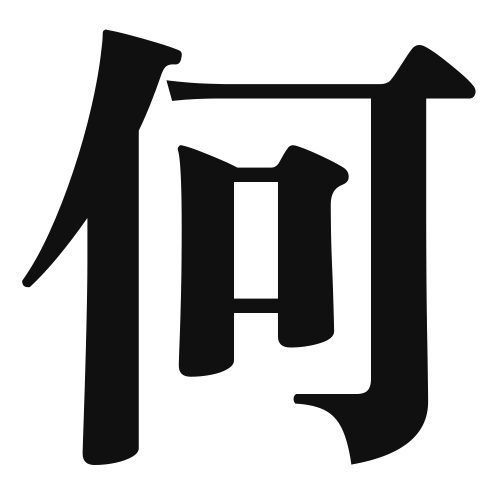1. Overview of Meaning
The kanji “何” (nani) means “what” in English. It is used to ask questions about things, objects, or concepts, making it an essential part of everyday conversation in Japanese.
2. Formation and Radical
The kanji “何” is a combination of two elements. It is classified as a phonetic-ideographic character (形声文字), where the left part (the radical) indicates a semantic field, and the right part provides a phonetic clue. The radical for “何” is “口” (kuchi), which means “mouth,” suggesting a connection to speaking or asking.
3. Examples of Usage
Common words and phrases that include “何” are:
- 何ですか (nandesuka) – What is it?
- 何時 (nanji) – What time?
- 何か (nanika) – Something/anything
Example sentences in daily conversation:
- これは何ですか? (Kore wa nan desu ka?) – What is this?
- 何時に会いましょうか? (Nanji ni aimashou ka?) – What time shall we meet?
4. Synonyms and Antonyms
Similar kanji with related meanings include:
- どれ (dore) – which (used when choosing from a selection)
- 何か (nanika) – something (implying an unspecified object)
Antonyms include:
- 全て (subete) – all (indicating everything, as opposed to questioning what)
- 無 (mu) – nothing (indicating the absence of anything)
5. Cultural and Historical Background
The kanji “何” is deeply rooted in Japanese culture, often appearing in various proverbs and idiomatic expressions. For example:
- 何事も初めが大切 (Nanigoto mo hajime ga taisetsu) – Everything starts with a good beginning.
- 何でも屋 (nandemoya) – a jack-of-all-trades (someone who can do many different things).
This kanji reflects the Japanese emphasis on inquiry and understanding, making it a vital part of communication and cultural expression.
